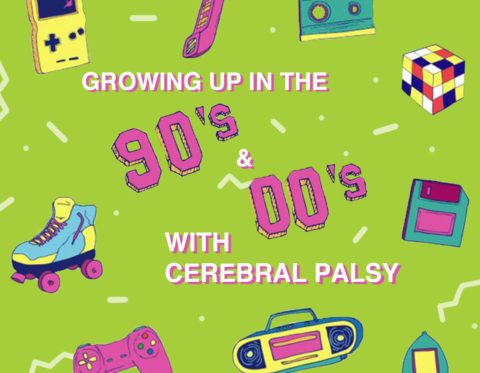
Phone: 212 520 1686
Email: info@yourcpf.org
Growing Up in the 90s and 00s with Cerebral Palsy
As I progress in my career as a journalist and writer, the more attention and followers I receive on social media. Every so often, I receive a direct message or email from young readers, explaining how I’ve become a role model for them. They express the inspiration they gain from witnessing me not allowing my cerebral palsy get in the way of following my dreams. It was then that I realized I am now the role model that I desperately needed when I was a young girl.
Social media only started to become a “thing” when I entered high school. I still remember the days when Facebook was only available to Harvard students and then to students at other universities. Also during that time, you never saw disability being portrayed on the big screen — although it still isn’t the mainstream nor the most accurate representation, there are a handful of movies and TV shows that, at the very least, attempt to include disabled characters.
Growing up in the turn of the century, I did not believe in tooth fairies or unicorns, but rather I believed that someday and somehow I’d wake up one morning and my disability would be gone. Messages of body image positivity and diversity did not exist, embracing and accepting one’s disability remained a foreign concept. When I was a teen, I would’ve never imagined seeing someone like Aaron Philip — the first black, trans, disabled person to be signed by Elite Model Management — on the cover of Teen Vogue.
I constantly attempted to make my cerebral palsy “disappear” in the background. I’d religiously follow and purchase the latest fashion trend items from Limited Too or Abercrombie & Fitch. Or, maintain my highest score on Club Penguin and dared not to let my Tamagotchi die. In my young, naive mind, I believed that if I made myself “cool” by following the latest trends and fads, my disability would become acceptable, or unnoticeable, among my peers.
Without feeling represented or heard in the world around me, I felt alone and confused about my cerebral palsy. Unlike today in 2020, you couldn’t connect with other people with disabilities with a few clicks or taps in the year 2002. While there are many discussions being held about how social media and technology make face-to-face interactions scarce and infrequent, it also undoubtedly has its benefits. It has the ability to connect you with another person who has the same disability as you from all the way on the other side of the world.
Now, as an adult, I often wonder how different my life would have been if I had the chance to accept and be proud of my cerebral palsy from a younger age, and what it would’ve been like for my family. Today, all the information on treatment and support/social groups related to cerebral palsy, along with any other diagnosis, is right underneath your fingertips. But, back in the day, I could not stand to be in my own skin because I was so obviously different from my peers, and I did not have access to any disability, let alone cerebral palsy, community.
However, I now have tremendous faith and hope for further generations of children with cerebral palsy. The disability family — self-proclaimed crip community — has endearingly embraced their motto, “nothing about us, without us.” It is the social media activism movements, such as #CripTheVote, that is opening the eyes of politicians and government offices to the needs and wants of people with disabilities, and showing them that they cannot afford to keep ignoring us.
Growing up without the tools of the internet, in a society and culture that was yet to embrace the beauty of disability, was hard, to say the least. But, I feel fortunate to now live in a time where diversity is celebrated and where social media helps people find a sense of community that they otherwise couldn’t. I am also honored and privileged to be in a position where I can help make the media and literature become more inclusive of disabilities than it has in the past.
***
Blog written by Sarah Kim





